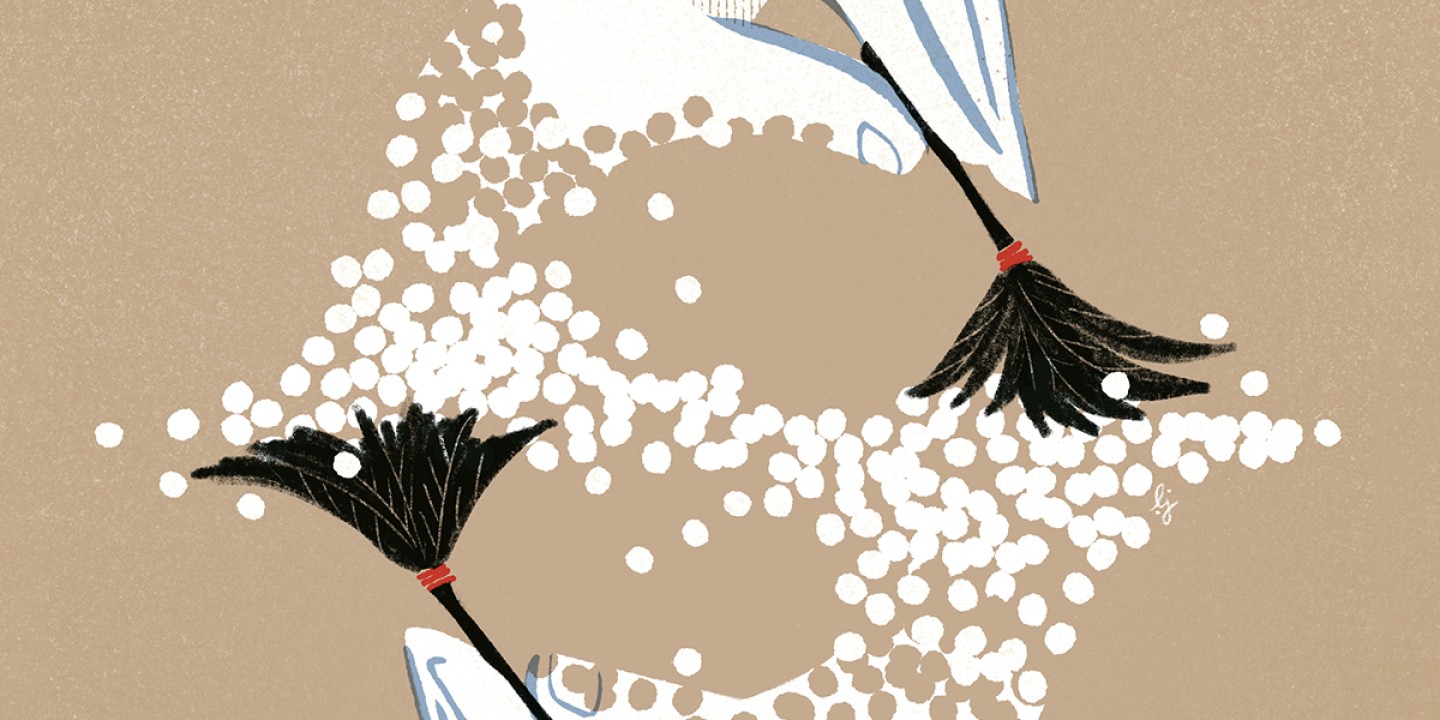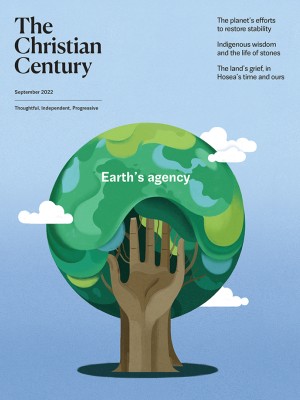A church made of dust
After each service, I sweep up the dirt, specks of plastic, and tendrils of hair.

We are a tenant church. Renting a space for worship is a way of life deep in our bones. Cleaning up is written into our contract, one of the tasks that comes with low rent for a few hours each Sunday in an Episcopal church’s fellowship hall. It is a small job, too minute, I’ve concluded, to trouble a volunteer.
My role as occasional sexton doesn’t carry the majesty of its Latin—“custodian of sacred objects.” I do not dig graves like my medieval counterparts. In truth, I find nothing especially spiritual about the work.
Instead, running a towel across the blinds and checking the bathrooms for paper towels is humbling. Whatever hearty proclamation I make from the pulpit, however our hearts are rent by soaring hymns, our skin turns to dust that accumulates in cracks and corners. We create waste. Someone must clean it up.
Read our latest issue or browse back issues.
In the semiarid countries where I have lived, dust is a faithful companion. Hot winds sweep through wadis, whipping the fine sand into thick ribbons of cloud. They settle in corners and crannies. Sleeping in the desert, I would awake with a veneer of dust settled onto my skin.
Perhaps it is because of its ubiquity and nuisance that in the Hebrew Bible dust is a portent and pathway of humiliation. We discover Job defiling his horn in the dust. The psalmist’s soul is cleaving to it. Throughout the prophets, serpents are lapping up dust like water and people are grinding their faces into the dust in order to put their sorrow on display.
Lamentations reminds me that it is good “to sit alone in silence when the Lord has imposed it, to put one’s mouth to the dust” (3:28–29). It’s a graphic image to consider as I look at the specks of plastic, tendrils of hair, sloughed-off skin cells, sweater fibers, bacteria, dust mites, cat fur, pieces of dead bugs, and dirt that I’ve gathered into a small mound. Dust isn’t useful. It is the mortification of our bits and pieces. Zephaniah in a rage declares a future in which blood is poured out like dust and “their flesh as the dung” (1:17).
In less arid countries, people make dust. We each regenerate our skin every month or two, shedding the old layer into the air. Nineteen million skin cells, stacked like pancakes, die and then flake off before they settle down among the other rubbish. Who will clean up after us?
“What is this place, where we are meeting?” Huub Oosterhuis wonders in his hymn. “Only a house, the earth its floor.” Each time I sing this song, I wish there was a verse for the corners where dust and bits of paper accumulate.
Cleaning the corners for worship robs me of any illusion to transcendence I’ve invested in church life. We are earthy people, dust-making creatures, and to dust we shall return. “A serious house on serious earth it is,” Philip Larkin said of church buildings. I have built my life into this body for the seriousness of it, for the dust. And after the beauty and the grace of gathered bodies, the pastor is the one who bears witness to what is left behind, in trash cans and under chairs.
Today I climb the stairs to the third floor and gather the relics of our body. An inch of blue yarn, a safety pin, a green marker, a small plastic bag holding pedicels of grapes. Emma has been drawing her cartoon snakes again—here’s a boa constrictor wearing a top hat. The crumbs of our people’s lives remain, hanging in the air, gathered together in clumps on the ground. I sweep away the traces in order to make room for more of us.
In Genesis we learn that we are made from dust, formed from the dry layer of sand that chokes out life in sandstorms and works its way into our crevices. In Targum Pseudo-Jonathan, an exposition of the second Genesis creation story, God creates people from a mixture of dust taken from the ground where the temple will be built, along with dust from the four winds. A mixture of universal and particular, of consecrated and unconsecrated dirt, bound to a holy place and gathered from everywhere. For the rabbis, this explained the human capacity for seemingly endless evil even as we bear the image of a good God. We are, somehow, always both.
Much of this life is cleaning up after one another, figuring out what to do with the mess. Someone will come along to sweep up after us, to take away the cast-off parts. Church is the place where people have chosen one another’s mess. People are complicated and lovely. They disappoint us, then exceed our expectations. We long for one another, and we come up empty. It is messy, this dusty life.
I clean up the church week after week, and I’ve come to accept that we can’t get away from the shedding of our skin. We can’t leave behind the mortifications of the flesh that are acne and aging, losing our abilities one by one. We are fragile dust creatures. What is this place that we are meeting? It is the place where we learn to love the dust of one another’s bodies.







